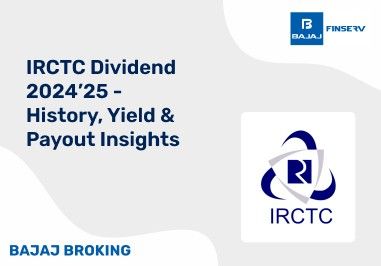Five Financial Ratios that All Stock Investors Should Understand
Whether you have just started trading online or are a seasoned trader, you should learn to use the top five financial ratios to analyse a company’s financials well. These ratios are the Price-to-Earnings (P/E) Ratio, Debt-to-Equity (D/E) Ratio, Return on Equity (ROE), Current Ratio, and Earnings Per Share (EPS).
Using these ratios, you can compare companies with their closest competitors to draw compelling insights. You can also perform a trend analysis using financial ratios to see how a company’s performance has evolved over time.
Importance of financial ratios in stock investing
Most numbers reported in the financial statements of a company do not reveal much on their own. It is only when we combine two or more numbers using financial ratios that we can draw insights into a company’s performance.
Let us take the case of the debt-to-equity (D/E) ratio. Suppose a company has Rs. 20 lakhs of liabilities. Should we be concerned about it or should we be satisfied with its performance? On its own, the liabilities number fails to convey anything about the company’s performance.
But let us say that the company has shareholders’ equity of Rs. 10 lakhs, then it has a D/E ratio of 2:1. This can be a good starting point for our financial ratio analysis.
In simple words, ratios help us make sense of complex data reported in financial statements and enable us to decide whether we should invest in a company or not.
Overview of the five key financial ratios
Price-to-Earnings (P/E) Ratio
Formula: Price of a Share / Earnings per Share
How to interpret the P/E ratio: When a stock has a higher P/E ratio than its closest competitors, it indicates that the stock’s price is high compared to its earnings-generating potential. Hence, such a stock can be called overvalued. Conversely, if a stock has a lower P/E ratio than its closest rivals, it could be that its price is low vis-à-vis its ability to generate profits and hence it is undervalued.
Case study: Using P/E ratio in investment decisions: Suppose A, B, and C are all FMCG stocks and are close competitors. The P/E ratio of A, B, and C is 10, 14, and 17, respectively. Based on this data, it seems that A is the cheapest stock and C is the most expensive stock. However, at times, the earnings of a company can get affected due to one-time factors, which can provide us with a misleading P/E ratio. Hence, you should adjust the earnings of A, B, and C to normalise them and then check the P/E ratio.
Debt-to-Equity (D/E) Ratio
Formula: Liabilities of a company / Shareholders’ equity of a company
Significance of the D/E ratio in evaluating a company’s leverage: The D/E ratio tells us how efficiently a company is using debt to finance its growth and operations. If a company has a very high D/E ratio, it means its reliance on external funds is high. Besides, the company could also be under tremendous pressure to pay interest on the debt. However, if a company has an extremely low D/E ratio, it is perhaps too conservative in using debt to fuel its growth. As this ratio provides us with compelling insights, it is important to evaluate a company’s leverage.
Example: Assessing a company's financial health with the D/E ratio: Suppose a manufacturing company has a D/E ratio of 2:1. For each rupee of shareholders’ equity, it has two rupees of liabilities. This sounds alright because a D/E ratio of 2:1 is often seen in such companies. However, the company’s interest expenses are so high that it is incurring a loss. Then, we need to analyse why its interest expense is extremely high when its D/E ratio is not unusual. It could be that the interest rate in the market is high. Or, it could be that the lenders are willing to provide funds to the company only at a high rate. If that is the case, we need to know the reason why lenders are asking for a high interest rate.
Return on Equity (ROE)
Formula: Net Profit of a Company / Shareholders’ Equity
Importance of ROE in measuring profitability: Equity shareholders are the ultimate owners of a company. Hence, it is important to assess whether a business is able to generate a reasonable ROE or not. If a business is not able to provide a sufficient return to its equity shareholders, they may think of liquidating it. Hence, ROE is one of the most important ratios from a profitability viewpoint.
Practical application: Comparing ROE among industry peers: Let us say that we have three close competitors from the IT industry - X, Y & Z. X has an ROE of 25%, Y has an ROE of 28%, and Z has an ROE of 32%. This shows that Z is able to generate a better return for its equity shareholders than X and Y. And, X is able to generate the lowest return of the three companies.
Current Ratio
Formula: Current Assets / Current Liabilities
Relevance of the current ratio in assessing liquidity: If a company is not able to pay its short-term obligations by using its current assets, then it will face a liquidity crunch. It may have to borrow to pay its short-term obligations. However, since it is already facing a liquidity crunch, lenders may not provide it with funds. Hence, it may turn out to be a vicious circle. Therefore, the current ratio is extremely relevant.
Real-world scenario: Evaluating a company's short-term financial stability: Britannia Industries Ltd., one of the major manufacturers of bakery products in India, had total current assets amounting to Rs. 4,849 crores and total current liabilities amounting to Rs 4,084 crores as on March 31, 2024 based on its annual report uploaded at the Bombay Stock Exchange’s (BSE) website. Hence, its current ratio was around 1.2. Its current assets are a bit more than its current liabilities. Therefore, it can pay its short-term obligations easily using its current assets. Hence, it is not facing a liquidity issue.
Earnings Per Share (EPS)
Formula: (Net Profit – Preferred Dividends) / Common Shares Outstanding
How EPS impacts stock prices: EPS is a measure of a company’s profit-generating ability. Hence, if a company’s EPS increases, its stock price should also increase. After all, shareholders will reward a company if it improves its ability to generate profits. However, if a company’s EPS falls, its share price is likely to fall.
Case study: Analysing a company's EPS trend over time: Suppose a company had an EPS of Rs. 10, 12, 20, 14, and 16 in Years 1, 2, 3, 4, & 5, respectively. Notice that its EPS suddenly jumps from Rs. 12 in Year 2 to Rs. 20 in Year 3. Then, EPS declines to Rs. 14 in Year 4. It seems that Year 3 is an aberration. Often companies report a one-time profit, for example, on account of the sale of an asset like land or shares. Such one-time items are unlikely to get repeated. Hence, you should remove one-time items from the earnings for all the years and then analyse the trend in a company’s EPS.
Conclusion
The five ratios discussed above can help investors analyse a company’s performance. More importantly, these ratios can help investors compare a business’s performance with its peers. Hence, they are extremely important if you are trading online. Ratios are at the core of financial analysis when we decide whether we should invest in a company or not. Hence, all investors should get a firm grip on ratios to make better investment decisions.
Disclaimer: Investments in the securities market are subject to market risk, read all related documents carefully before investing.
This content is for educational purposes only. Securities quoted are exemplary and not recommendatory.
For All Disclaimers Click Here: https://bit.ly/3Tcsfuc













